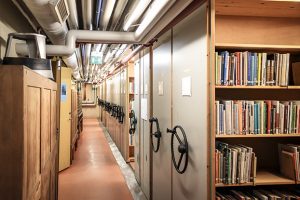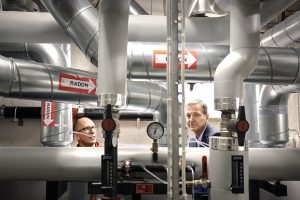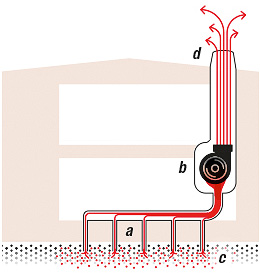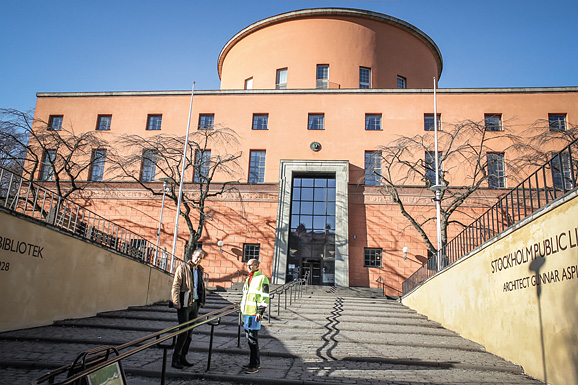Radon is a naturally occurring radioactive natural gas. You can’t see it, smell it or taste it. Nevertheless — or exactly for this reason — the element is extremely hazardous. A common cause of lung cancer (second only to smoking), this result of radium decay is responsible every year for 20,000 deaths in the US, about 15.000 in the EU and approximately 500 in Sweden.

The archive of the library was a taboo zone for a long time. Access was forbidden due to the high radon levels.
But radon occurs naturally in many types of soils. The gas becomes a hazard as soon as it penetrates the buildings foundations and enters the buildings. It becomes concentrated in indoor air and quickly achieves dangerously unhealthy levels — which is what happed in the Stockholm City Library. A legally proscribed energy check revealed that the radon concentration in the building’s archive was 2,000 Bequerel per m3. The legal limit value in Sweden is 200 Bequerel per m3.
The last chance
The library immediately declared the archive in the basement a taboo zone. The librarians were prohibited access to thousands of books. While seeking a solution to the problem, the library management collaborated with various service providers. One company sealed all the cracks and seams in the basement and another tried to slightly over-pressurize the air throughout the library. None of these measures were successful.
Through a trade fair contact, the library found Radonkonsult, a company that has specialized in protection against radon for decades. Michael Myntelius, COO at Radonkonsult, says: “After several failed attempts, the library management could no longer afford to experiment. This is why it was clear from the very beginning that we had exactly one chance to apply a viable solution.”
Tiny holes, major impact

The solution in place extracts the radon directly from the ground and lets the gas escape from the building through conduits.
After making extensive on-site measurements, it became apparent that Radonkonsult would be able to apply a process in the library that had already mitigated the problem in over 7,000 projects. To prevent radon from flowing into the room and expanding there, it must be extracted directly from the soil. Radonkonsult drilled tiny holes with 16-mm diameters in the building’s foundation and used piping to connect them to a special radon pump. The pump contains several centrifugal blowers from ebm-papst that create a vacuum underneath the foundation. The pump siphons off the radon before it can enter the room. Next, the gas escapes from the building through conduits, mixes with the fresh air and is rendered harmless to humans.
The fight against radon is not an easy one – it requires plenty of know-how.
Jan Edlinger, sales engineer at ebm-papst in Sweden
How radon protection works
Through little holes (a) in the foundation, the radon pump (b) creates lower pressure below the foundation (c). The gas then escapes from the building trough conduits (d).

When asked why he uses blowers from ebm-papst in the system, Myntelius answered: “One word: quality. We have already built these systems with fans from China and with products from the Swedish competition. They simply cannot compare to the quality and durability of the ebm-papst products. In some systems, they have been running for over 20 years.” In the library, Radonkonsult installed four radon pumps with seven blowers each. The result: The radon concentration dropped from 2,000 Bequerel per m3 to 50 Bequerel per m3 within a very short time. “The fight against radon is not an easy one — it requires plenty of know-how,” said Jan Edlinger, a sales engineer at ebm-papst. “It is wonderful to see Radonkonsult’s results.”
In order to be certain that the low radon level was not a short-term effect, the library decided to have the basement monitored for two months before they opened it up again. The measurements showed that the system was consistently keeping the values below the limit. The librarians were able to return to their books and work without risk to their health.

Leave a comment